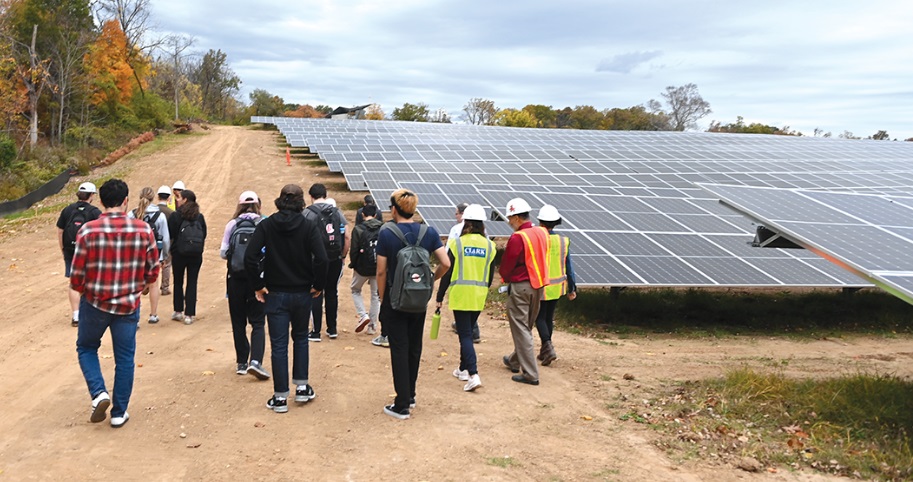The Catholic University of America, located in Washington D.C. was one of the first universities to sign on to the Laudato Si Action Platform, a global initiative to increase the Catholic church’s ecological practices. Not only has the University installed solar so that it can generate its own clean energy, but it has made sustainability part of its curriculum as well as part of its five-year plan.
The 7.5 MW solar project uses ZNshine solar modules, Chint Power Systems inverters and Solar FlexRack racking. The ground-mount installation is located on a 40-acre parcel, previously planned to be a parking lot, on the west campus of the University.
“This West Campus solar farm project is not just a renewable energy venture; it’s a testament to The Catholic University of America’s dedication to creating a sustainable future for our nation and world,” said President Peter Kilpatrick, Catholic University. “As we illuminate our campus with clean energy, we also enlighten minds through education and invite the community to join us on this transformative journey toward a greener and more sustainable world.”
Trees that once stood on the parcel were salvaged by the District of Columbia’s Urban Forestry Division and milled into lumber or made into benches to be donated to school and non-profits. Once the land was cleared for the solar area, the area was planted with pollinators and beekeepers will tend hives at the site.

All of this makes for an outdoor classroom for the Introduction to Energy and Energy Systems course as well as other sustainability courses taught at the University.
The solar array was developed in collaboration with Standard Solar, who will own, operate and maintain the system. The array will save an estimated 7.115 metric tons of carbon emissions annually and contribute to the city’s goal of achieving 100% renewable energy by 2032 and carbon neutrality by 2050.
The array will also provide clean energy savings to over 1,200 subscribers within the community, benefiting District residents. The 20-year projected savings to district subscribers is estimated at $3.5 million.
“Undertaking a project of this magnitude in an urban setting presents its challenges, but the potential rewards for the region are immense,” said Scott Wiater, president and CEO, Standard Solar. “The West Campus Solar Array will power the university sustainably and benefit the local community. It’s a true win-win scenario for all involved.”
This content is protected by copyright and may not be reused. If you want to cooperate with us and would like to reuse some of our content, please contact: editors@pv-magazine.com.









By submitting this form you agree to pv magazine using your data for the purposes of publishing your comment.
Your personal data will only be disclosed or otherwise transmitted to third parties for the purposes of spam filtering or if this is necessary for technical maintenance of the website. Any other transfer to third parties will not take place unless this is justified on the basis of applicable data protection regulations or if pv magazine is legally obliged to do so.
You may revoke this consent at any time with effect for the future, in which case your personal data will be deleted immediately. Otherwise, your data will be deleted if pv magazine has processed your request or the purpose of data storage is fulfilled.
Further information on data privacy can be found in our Data Protection Policy.